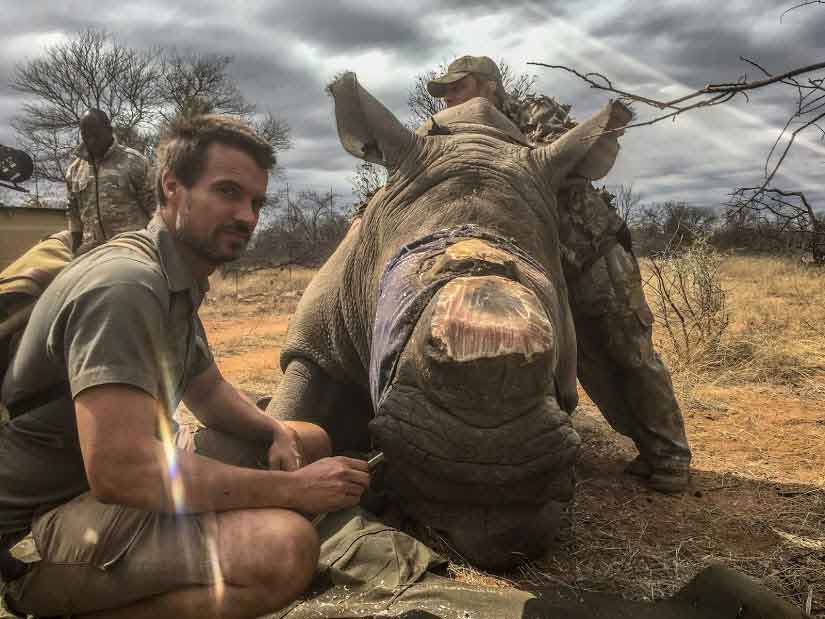GAZETTE REPORTER
Botswana is now a ‘main country of origin” for rhino horns smuggled from Southern and Eastern Africa to Europe, the Middle East and Asia annually, a new global crime trends report from the International Police Organization (Interpol) has revealed.
In its latest edition of the ‘World Atlas of Illicit Flows,’ Interpol said although Zimbabwe and South Africa still account for 94% of the global illicit rhino horn trade flows, Tanzania, Kenya, Mozambique, Namibia, Botswana and Zambia are now source countries for the illicit rhino horns.
The report showed illicit rhino horns flowing from East and Southern Africa to the Persian Gulf via drop-off destinations in Oman and Yemen. While some trade finds its way into the local markets, the bulk is smuggled via Eastern Europe to China.
The investigation by Interpol and the Global Initiative Against Organized Crime also found that rhino horn sourced from Southern Africa, including Botswana, is trafficked to the United Kingdom, Ireland, Belgium, the Netherlands, Czech Republic, Slovakia and Germany among other European countries.
Most of the ivory mopped up by organised gangs from Africa is trafficked directly to Asian markets in China, Hong Kong, Vietnam, Mynmar, China, Tibet, Nepal, India, Singapore, Thailand and Malaysia. To avoid detection, rhino horn smuggling syndicates working from Southern Africa have opened a new and longer smuggling route that reaches China via Iceland.
“In the case of rhinos, about 94% of the animals are poached in Zimbabwe and South Africa, which have the largest remaining rhino populations. In those countries, poaching has increased dramatically – from 13 (the number recorded in 2007) to 1 215 in 2014, declining slightly to 1 028 by 2017.
“Poaching of rhino horn involves organized syndicates. Rhinos have disappeared entirely from several Asian and African countries in recent years. The value of rhino horn poached in 2013 was valued in downstream markets at between US$63.8 million and US$192 million, but the value is much less at the supply end of the chain,” the report said.
Among other key findings, researchers discovered that the number of elephants killed in Africa during 2016 was between 20 000 and 25 000. According to Interpol, illicit African ivory fetches between US$165 million and US$180 million per year in the Asian markets.
According to recent 2018 rhino fatality figures from the region, 508 rhinos have been killed by poachers in South Africa, 250 in Mozambique, 25 in Namibia, 6 in Botswana and 2 in Zambia. Zimbabwe has not updated its statistics as yet.
In Botswana, 4 rhinos have been killed in the south-western Ghanzi district, 1 in the Tuli Block area and 1 in the NG-23 conservation area of the Okavango Delta. The 2018 statistics point to an upsurge in rhino poaching, up from just two rhino fatalities between 2013 and 2017.
Wildlife crime and terrorist-financing in Africa
The report noted that poaching continues to play a ‘relatively’ small role in the financing of most of the non-state armed groups and terrorist organisations in Africa.
“It is estimated that less than 1% of the overall income to non-state armed groups comes from ivory. Ivory provides a portion of the income raised by militia groups in the Democratic Republic of Congo and Central Africa Republic, and is most likely a primary source of income for the Lord’s Resistance Army, which currently operates in the border triangle of South Sudan, CAR and DRC.
“Ivory also provides a source of income to the Sudanese Janjaweed and other horseback militias and gangs operating across the Sudan, Chad and Niger. Given the estimated elephant populations and the number of projected elephants killed within striking range of these militia groups, the annual income from ivory to militias in the whole sub-Saharan region is likely to be in the range of US$4.0 million–$12.2 million,” the report concluded.

